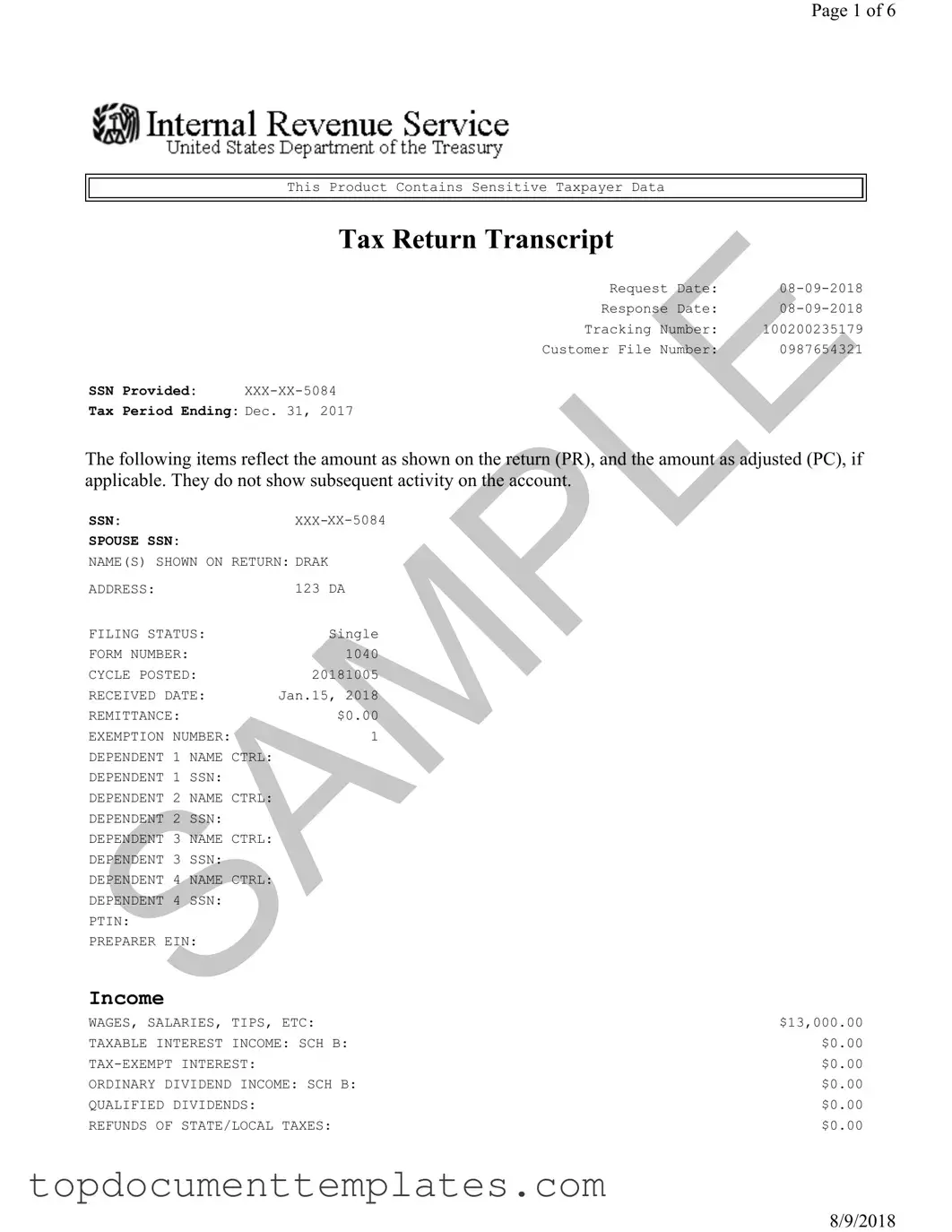The Sample Tax Return Transcript form serves as a vital document for individuals seeking to understand their tax filings and financial obligations. This form provides a comprehensive overview of a taxpayer's financial information, including income sources, deductions, and tax credits for a specific tax period. For instance, it includes details such as wages, salaries, and any business income or losses, along with adjustments that may affect the taxpayer’s overall income. The transcript also highlights the taxpayer's filing status, exemptions, and the total tax liability, enabling individuals to assess their tax situation accurately. Additionally, it records any payments made, refunds due, or amounts owed, presenting a clear picture of the taxpayer's financial standing. Understanding this form is crucial, as it not only aids in personal financial planning but also serves as a reference for various applications, such as loan approvals or financial aid requests. By breaking down complex tax data into digestible information, the Sample Tax Return Transcript form plays an essential role in promoting financial literacy and responsibility among taxpayers.
